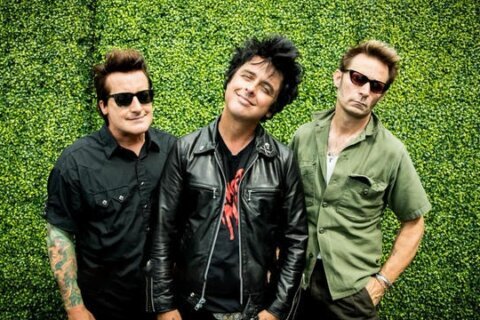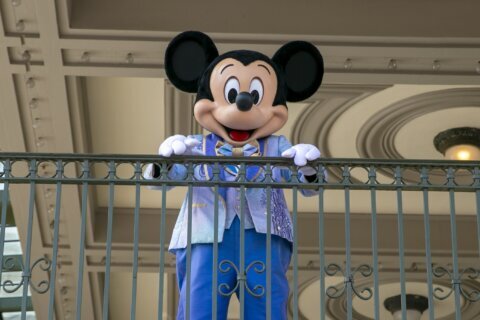NEW YORK (AP) — Decades after the release of Michael Mann’s “Heat,” the classic crime thriller has endured in the minds of fans, critics, peers and the director himself.
He had so much left to say.
“There’s always the sense of being shortchanged,” Mann said during a Zoom interview from his apartment in Modena, Italy, where he is currently working on “Ferrari,” starring Adam Driver as the race car driver-auto magnate. “I love doing the research and building these characters out very, very completely, and rooting the actor into a whole life. … The movie is a splinter, it’s just a very narrow slice of a complete life.”
Mann has finally rounded out the story from his 1995 movie. He has brought back the lethal, calculating criminal Neil McCauley, played by Robert De Niro; the swaggering detective Vincent Hanna, played by Al Pacino; and such supporting characters as Chris Shiherlis (Val Kilmer), Michael Cheritto (Tom Sizemore) and Nate (Jon Voight).
He does hope to make another “Heat” movie, but he has chosen to introduce his new narrative through words only, the novel “Heat 2.”
Written with the award-winning crime novelist Meg Gardiner and scheduled to come out Aug. 9, the 480-page “Heat 2” is a sequel and prequel, looking back to the late 1980s and ahead to the 21st century, expanding the world of McCauley and Hanna and Shiherlis among others, adding new characters and moving the action everywhere from Los Angeles to Paraguay and Asia.
Mann had never attempted a novel before and finally tried in part for a similar reason he takes on a given film: To see if he can. In some ways, he approached the book as if planning a movie production. He began with a basic story — he likes to know in advance how the plot turns out — and built the narrative outward, over time and space. For his novel, he speaks of creating “momentum that is almost cinematic,” a symphony driving to a closing clash.
“Heat 2” permitted him to explore and digress in ways he wouldn’t attempt on screen. He makes a point of knowing everyone’s inner and outer lives. McCauley, for instance, he sees as a longtime outsider, institutionalized in his early teens. He sees him as “very intelligent,” with a “really strong ego and very little self esteem.” An ideal criminal.
“He goes to violence, immediately, zero to 60,” Mann explains.
“Heat,” among the most celebrated movies never to receive an Oscar nomination, has a base of obsessive admirers. After a special screening in June at the Tribeca Film Festival, audience members shouted lines from the movie during a panel discussion with Pacino and De Niro. Mann say fans often come up to him and quote from the famous coffee shop conversation between McCauley and Hanna, the first time Pacino and De Niro had ever shared screen time (They had previously appeared in separate time periods in “The Godfather, Part II”).
“Heat 2” is a departure for Mann, and from novels in recent years by other filmmakers, among them Werner Herzog, Brian De Palma and David Cronenberg. While Herzog’s “The Twilight World” and De Palma’s “Are Snakes Necessary?” are original stories, Mann is doing a kind of reversal, taking characters created for the screen and adapting them to the page. Instead of finding it a distraction to think of Pacino when he’s describing Hanna, he welcomes the merger of actor and character.
“They’re fused. It’s a fusion. They’re one and the same,” he says. “Vincent Hanna is Al Pacino and Al Pacino is Vincent Hanna. Neil McCauley in 1988 is Bobby (De Niro) seven years younger. … Since I made the movie and sought Al Pacino and De Niro and Val Kilmer, you bet that’s who these people are.”
Gardiner joined Mann at the suggestion of their mutual literary agent, Shane Salerno. Known for her Evan Delaney novels, she is a “Heat” fan and a partisan for Mann’s film in the many discussions she has had with fellow writers over whether “Goodfellas,” “The Godfather” or “Heat” is their favorite crime movie. For “Heat 2,” she helped Mann with the book’s structure and otherwise proved a sounding board and close collaborator, the two eventually writing alternating chapters. Their time together — she lives in Austin, Texas, he is based in Los Angeles — in some ways mirrored the belated face-off between Pacino and De Niro, who despite being co-stars only meet midway in the 170 minute picture.
“We began working together in the depths of Covid,” she says. “We didn’t get a chance to meet for a year. It was all long phone calls, and long emails back and forth.”
Mann, 79, has been working in film and television since the 1970s, whether writing episodes for “Starsky and Hutch,” serving as executive producer of the show “Miami Vice” or directing “The Insider,” “Manhunter” and “Public Enemies.” He is a Chicago native who says his take on the world — “a certain kind of cynical worldview, I guess” — was shaped by his experiences as the son of grocers in the inner city. Citing “The French Connection” and its director, William Friedkin, as favorites, he jokes that filmmakers like himself and Friedkin who grew up in Chicago itself end up making crime stories, while those from the suburbs (such as the late John Hughes) prefer comedies.
“Heat 2” is the first of three planned novels (one of which may be related to “Heat”), and an ambitious literary beginning for a man who had never attempted a work of fiction before. He majored in English at the University of Wisconsin-Madison, with thoughts of becoming a teacher, but decided that would be “really immensely boring.” Asked to cite literary influences, he mentions John le Carre, but otherwise says he doesn’t read crime fiction. Instead, he looks to “primary sources,” the various killers, crooks, law enforcers and government agents he has met and befriended and whose stories he adapted for “Heat,” “Thief” and other films.
Critics and fellow directors have praised him for his complex narratives and gifts for pacing and atmosphere: Christopher Nolan has cited “Heat” as inspiration for his acclaimed Batman movie “The Dark Knight.” But some of Mann’s favorite feedback has come from those “primary sources.” He smiles when asked what some of the real-life models for his characters have said upon seeing his films.
“I’ve been offered alternative careers,” he says.
Copyright © 2024 The Associated Press. All rights reserved. This material may not be published, broadcast, written or redistributed.







